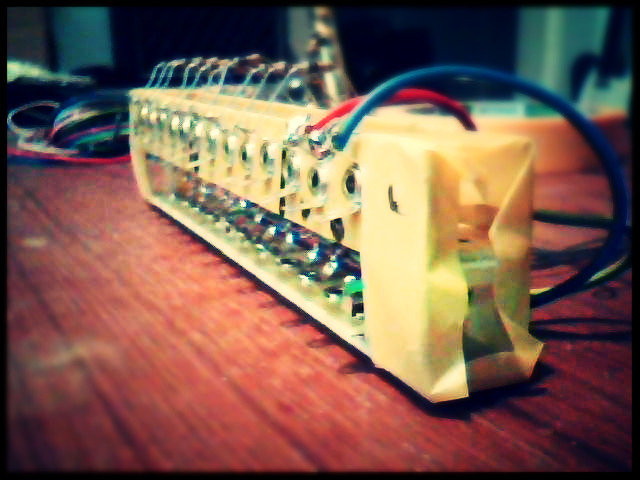abbey road d enfer said:
220r seems a bit extreme, since the sources will see a load of about 500 ohms, which they may not feel good about.
The inputs are fed with mic/phono/line preamplifiers via 100kOhm pots.. the summing bus then feeds a bypassable master EQ (which I believe is +/-0dB) and an additional line preamplifier (that has trimmers) which goes into the mixer outputs.
The EQ may take it but I was a bit worried about the master preamp, however it did quite fine (iirc at some point I had resistors in the bus output, I was thinking 1kOhm summing would do but you can always ease a bit on the channel trim/volume, the trim controls affect the PFL volume though)
It may seem a bit odd to amplify a signal and then at the next stage limit it with resistors but afaik it's how analog mixers are designed (the crosstalk, summing to mono prior to the bus, matching impedances etc)
Sourcing a suitable preamp is another thing.. the one I used throughout the build is now discontinued/obsolete. It depends on what your inputs are, eg. mic/instrument (which is when you'd look at low R values if it's a passive bus, unless ran with an active DI) or line level (which is when you'd need larger R values and more gain to compensate)
Summing busses with mixed-value resistors are called scaling (ie. you'd know what's plugged into it and intentionally pick suitable R values, although there's a risk of crosstalk due to some channels bleeding into the others, say in a stereo bus the mic inputs are 1kOhm and the rest of the bus is 10kOhm.. the mic channel goes into both L/R which forms a 2k shunt, one way to work this around is to use a pan pot I think or not to max out your mic vol if it's a dual gang pot)
Or use diodes.. forward voltage becomes your enemy as you need an active stage plus it may gate the signal I think (~0,7V is lowest I've seen, anything below that will be cut off as the diode doesn't conduct)

















![Electronics Soldering Iron Kit, [Upgraded] Soldering Iron 110V 90W LCD Digital Portable Soldering Kit 180-480℃(356-896℉), Welding Tool with ON/OFF Switch, Auto-sleep, Thermostatic Design](https://m.media-amazon.com/images/I/41gRDnlyfJS._SL500_.jpg)





